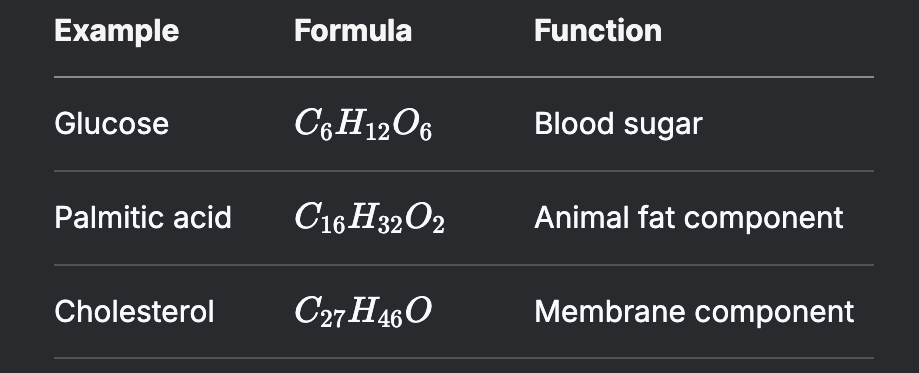B1.1 Carbohydrates and lipids
1/13
There's no tags or description
Looks like no tags are added yet.
Name | Mastery | Learn | Test | Matching | Spaced |
|---|
No study sessions yet.
14 Terms
Q: What happens in a hydrolysis reaction?
A large molecule is broken into smaller molecules using water, which is split into -H and -OH groups to form new bonds. Examples:
Polypeptide → Amino acids
Polysaccharide → Monosaccharides
Glyceride → Fatty acids + Glycerol
Q: What are monosaccharides, and what is their general formula?
A: Monosaccharides are simple sugars (monomers) with the ratio C:H:O = 1:2:1. Examples:
Pentoses: C5H10O5C5H10O5
Hexoses: C6H12O6C6H12O6
Q: How do alpha and beta glucose differ?
A: They differ in the orientation of the -OH group on carbon 1 (alpha: downward, beta: upward).
Q: What is their role in cell-cell recognition?
A: Oligosaccharides on glycoproteins/glycolipids bind to proteins on adjacent cells, enabling recognition (e.g., ABO blood groups).
Q: Why are lipids hydrophobic?
A: They lack charged/polar groups and dissolve in non-polar solvents (e.g., fats in toluene).
Q: Compare lipids and glucose:

Q: Compare saturated vs. unsaturated fatty acids:
Saturated: No double bonds (e.g., stearic acid, solid at room temp).
Unsaturated: 1+ double bonds (e.g., oleic acid, liquid at room temp).
Q: What causes lower melting points in unsaturated fats?
A: Double bonds create kinks, preventing tight packing.
Q: How are triglycerides formed?
A: Condensation of glycerol + 3 fatty acids (ester bonds form).
Q: Why are phospholipids amphipathic?
A: Hydrophilic phosphate head + hydrophobic fatty acid tails.
Q: What is their role in membranes?
A: Form bilayers: heads face water, tails cluster inward.
Q: What is the structure of steroids?
A: Four fused carbon rings (e.g., cholesterol, testosterone).
Q: Why can steroids cross membranes?
A: Hydrophobic nature allows diffusion through bilayers.
Q: Why are triglycerides efficient energy stores?
A: Release 2x energy per gram vs. carbs; inert, compact, and insulate heat.